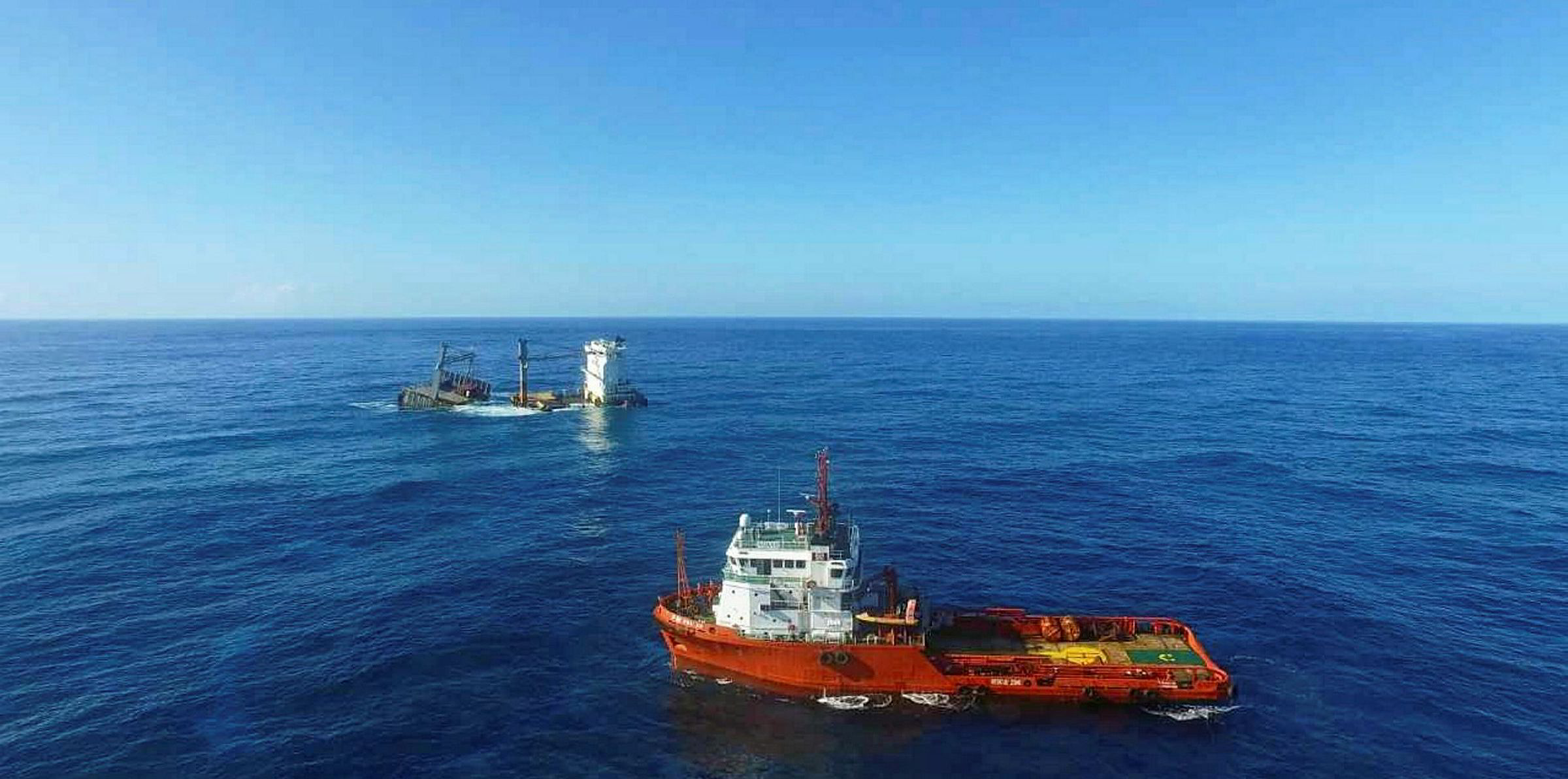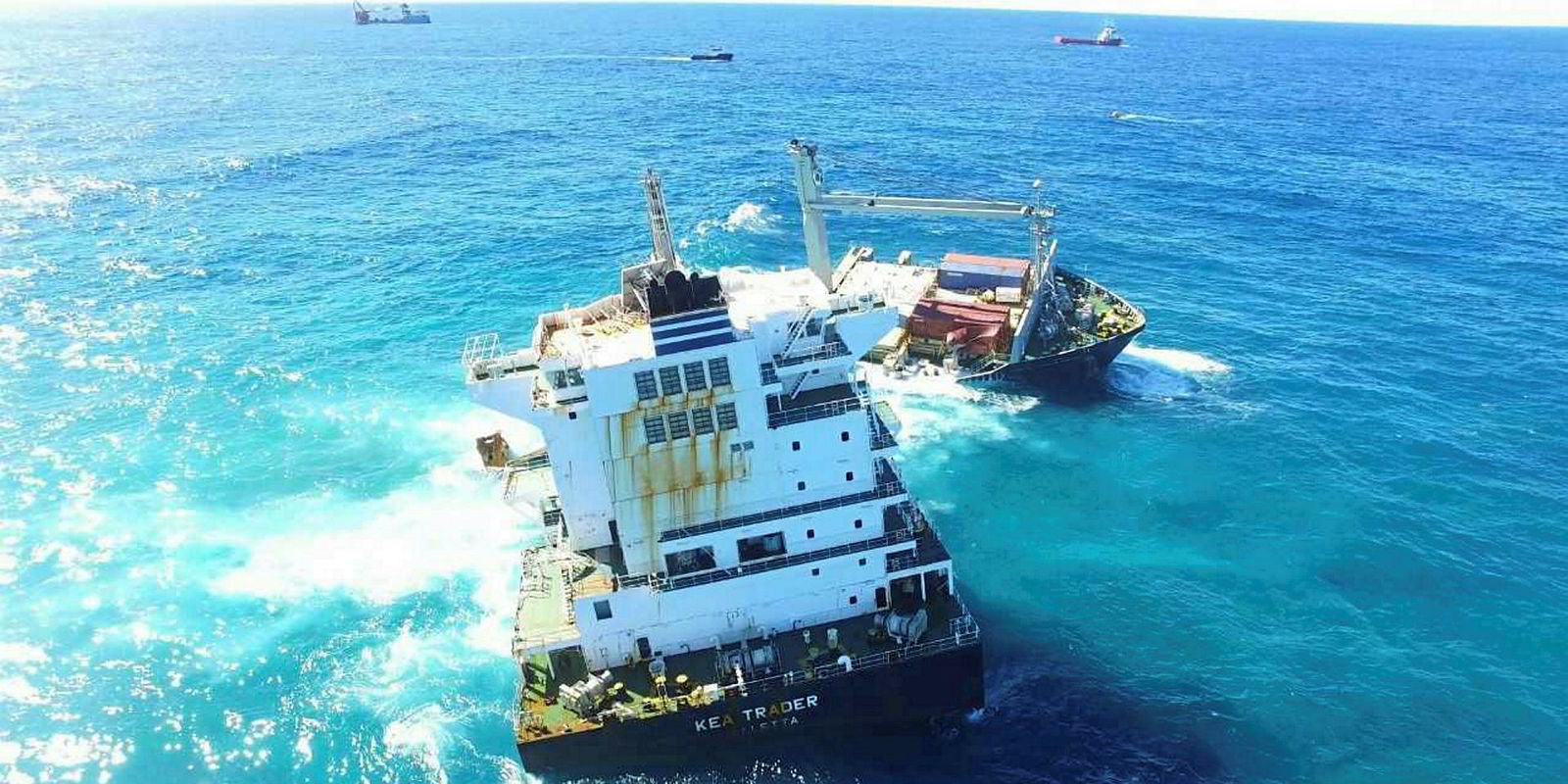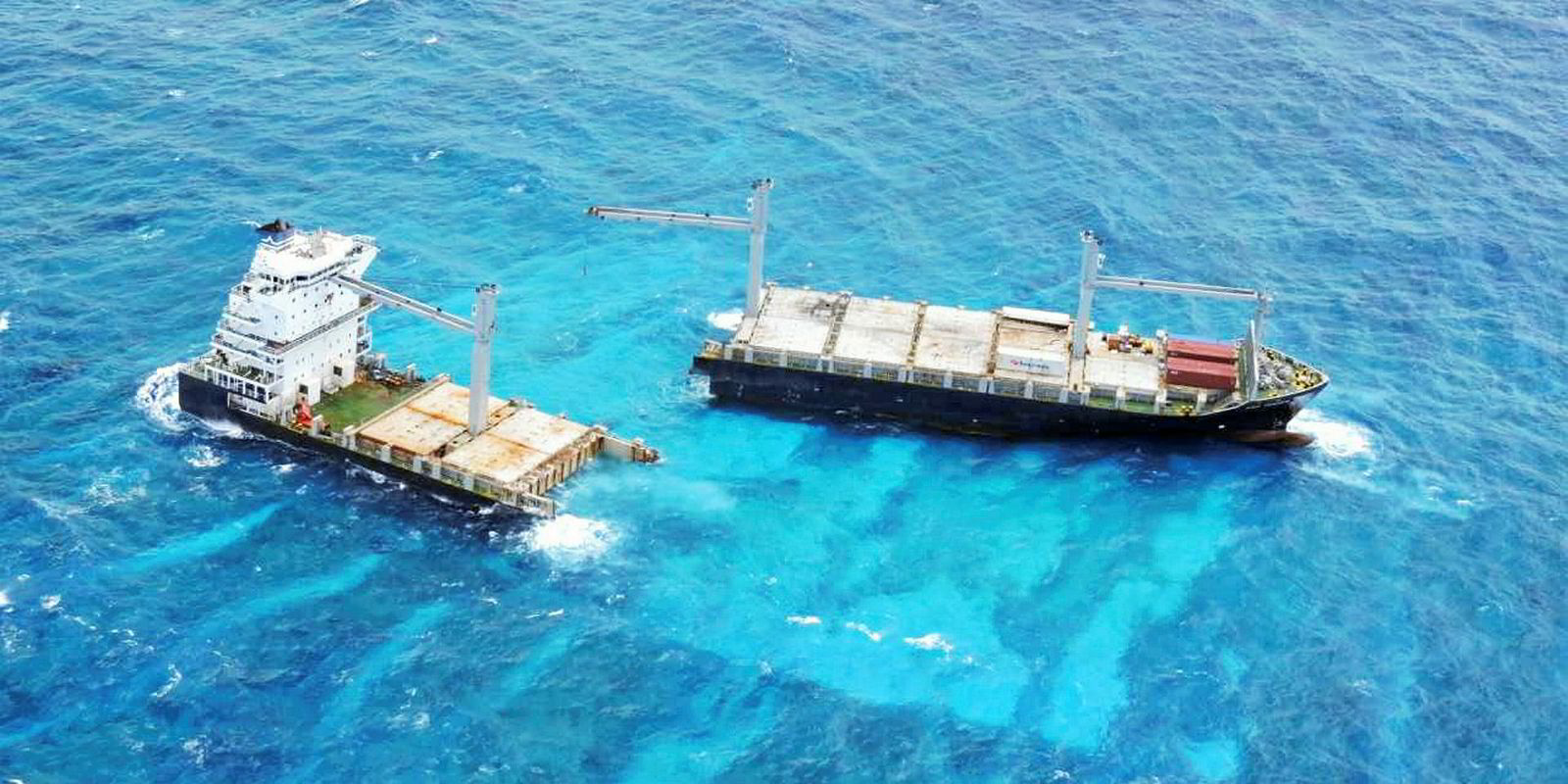A year on from the grounding of the new Lomar Shipping containership Kea Trader, the owner has said significant salvage progress has been made.
The 2,194-teu vessel (built 2017) hit a rock reef off New Caledonia in the South Pacific on 12 July, 2017.
The vessel broke into two halves last November as six months of storm force conditions affected the vessel and slowed the onsite work, frequently preventing access to the site.
Local authorities have said it could take another year to remove the wreck.
To date, salvors have removed 1,009 cbm of heavy fuel oils, diesel and other lube oils, and more recently oily polluted water, together with 697 of the original load of 782 containers and flat-racks.
More lately, 400 tonnes of other materials including furniture, computer equipment, partitions, false ceilings, mooring lines and other potential flotsam have been removed, Lomar said.
Much of this was taken by helicopter, given the year-round challenge of sea swells that affect this remote location – 140 nautical miles from the nearest port of Noumea.
Challenges remain
Lomar said safe access for workers from the Shanghai Salvage Company (SSC) is only possible in favorable weather.
"Boarding has only been possible 40% of the time since November," it added.
"The two remaining ship cranes on Kea Trader are no longer in operation and, together with a lack of deck space, make routine helicopter landings impossible – not least with the forward section listing by 20 degrees and the aft 12 degrees."
Materials are still being removed when conditions permit, with SSC concentrating on the collection of residual oily polluted water from pipes, reservoirs and hydraulic circuits; and any other remaining flotsam – 399 cbm of which has been removed to date.
Five empty container shells, one damaged during heavy seas, remain on top of the forward section.
Another eight of the original 782 containers and flat-racks remain below deck in the flooded cargo hold one, but are believed to be damaged.
Focus switching to debris
Attention is now switching to the recovery of debris on the reef that detached during the storms.
Airbags have been used to remove larger pieces of hull structure off the reef bed and onto a salvage vessel.
"This work will continue and escalate over the coming months with the return of more favourable weather," Lomar said.
The materials and debris currently being recovered will be recycled by local businesses in New Caledonia.
"Plans for recovering more substantive pieces of hull from the reef bed are well advanced, with the intention to mobilise new heavy resources with heavy lift capabilities – the design of which is subject to complex engineering studies and final approval by the authorities," Lomar added.
"It forms part of a revised methodology for removing the vessel, which has been required given its changing condition and is aimed to provide safeguards to the local environment."
A Lomar spokesman said: “Tremendous progress has been made in the past 12 months to safely remove the Kea Trader – however these efforts have been stymied by horrendous conditions on site.
"It will continue to take time to complete but the safety of those involved and the protection of this marine environment must remain our priority. We are moving forward with every passing month and remain grateful for the continued support of the authorities and patience of people and businesses across New Caledonia.”
OSVs remain on site
Four offshore vessels continue to work on site, whilst also monitoring the ocean for any floating debris and pollutants.
The vessel’s vertical fracture last November and subsequent storm damage released a quantity of material that washed ashore in New Caledonia and the Loyalty Islands.
This included less than one cubic metre (585kg) of tar balls and a further 18 tonnes of mostly polyurethane insulating material, plus pieces of containers and carpet – the volume of which has diminished in the last two months.
A total of 650 fully trained members of the local community, employed as contractors for the owner, have collected any debris that has washed ashore – committing over 26,000 hours inspecting beaches in often remote and isolated areas across New Caledonia and the Loyalty Islands.






